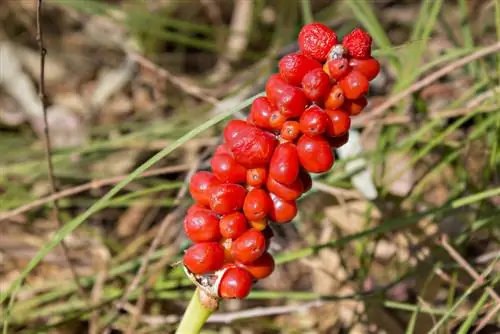- Author admin [email protected].
- Public 2023-12-16 16:46.
- Last modified 2025-01-23 11:20.
When it stands in the forest, it causes few people worries and problems. But if the fern ventures into the garden, grows in the bed or ruins the well-kept lawn, it's all fun.

How can I control fern in the garden?
There are three methods to effectively combat ferns in the garden: 1. Digging up the plant before spores form, 2. Mowing down in spring and mid-summer, 3. Chemical control if other methods are not sufficient. Regular fertilization of the soil and mowing helps preventatively.
Reasons that make fighting sense
All fern species are poisonous. Pets such as cats and dogs are particularly at risk. Even grazing animals such as horses, cows, sheep and goats are not immune from the danger.
Furthermore, small children could quickly become poisoned by this plant. Bracken fern in particular is considered highly toxic. Even inhaling small doses of its spores can lead to symptoms of poisoning such as vomiting and paralysis.
Another reason to fight ferns is that they like to spread using their spores and their runners. The bracken and the funnel fern are almost rampant. This displaces other plants.
Control Agent No. 1: Dig Up
It is biologically less harmful to the environment to dig up and destroy the annoying ferns. But with bad luck, the spores have already formed and the ferns will appear again next year. Therefore, digging is best done in the spring before spores form. A follow-up check is recommended in the following year.
When digging up ferns, it should also be noted that most fern species are deep-rooted. Their subterranean extensions develop over a wide area. They should also be rigorously removed (preferably pulled out) when digging.
Control agent No. 2: Mowing down
- Mowing the fern in the lawn
- first time: in June
- second time: in midsummer (before the new leaf fronds have fully developed)
- Procedure weakens the rhizomes and therefore the plant
- Success: medium
- if applicable necessary again in the following year
Control agent No. 3: chemical club
If nothing works and you don't care much about the environment, you still have the option of fighting the fern with chemicals. The use of herbicides is usually successful in the first year. However, the stocks usually recover and next year the chemicals will have to be used again at the expense of the groundwater.
Tips & Tricks
Prevention is better than fighting: ferns grow on nutrient-poor soils. If the soil is fertilized and mowed regularly, ferns will not spread at all.






